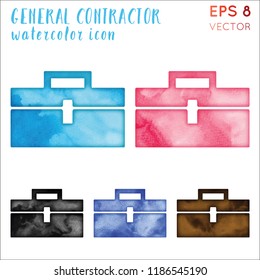Enhancing Minimal Areas: Color Techniques To Generate An Illusion Of Roominess
Enhancing Minimal Areas: Color Techniques To Generate An Illusion Of Roominess
Blog Article
Content By-
In the realm of interior decoration, the art of making the most of small areas through critical paint methods offers a profound opportunity to change cramped locations into visually large shelters. The careful choice of light shade combinations and creative use of visual fallacies can work wonders in creating the impression of room where there appears to be none. By utilizing these strategies sensibly, one can craft an atmosphere that opposes its physical borders, welcoming a sense of airiness and visibility that hides its actual dimensions.
Light Color Selection
Choosing light colors for your paint can substantially boost the illusion of area within your art work. Light shades such as soft pastels, whites, and light grays have the ability to mirror even more light, making a space really feel even more open and airy. These shades develop a feeling of expansiveness, making wall surfaces appear to recede and ceilings seem higher.
By using light shades on both walls and ceilings, you can blur the boundaries of the space, offering the impact of a bigger area.
In addition, light colors have the power to bounce all-natural and synthetic light around the space, brightening dark corners and casting less darkness. https://johnathanbluxd.blue-blogs.com/36854153/optimize-your-task-s-success-by-finding-the-vital-advantages-of-hiring-professional-drywall-contractors adds to the total large feeling yet likewise creates a much more welcoming and lively environment.
When choosing light shades, think about the undertones to make sure consistency with other aspects in the room. By strategically integrating light shades into your paint, you can transform a constrained room into a visually larger and a lot more inviting setting.
Strategic Trim Painting
When intending to develop the impression of area in your painting, critical trim painting plays an important function in specifying borders and enhancing depth understanding. By tactically picking the colors and finishes for trim work, you can efficiently control exactly how light interacts with the area, eventually affecting how large or small a room really feels.
To make a space appear bigger, think about painting the trim a lighter shade than the wall surfaces. This comparison creates a sense of deepness, making the wall surfaces recede and the room feel more extensive.
On the other hand, repainting the trim the very same color as the wall surfaces can create a smooth appearance that obscures the edges, offering the illusion of a continual surface and making the borders of the room less defined.
In addition, utilizing a high-gloss finish on trim can mirror more light, more boosting the understanding of area. On the other hand, a matte finish can take in light, creating a cozier ambience.
Thoroughly considering these details when repainting trim can considerably impact the total feeling and regarded dimension of a space.
Visual Fallacy Techniques
Making use of optical illusion strategies in paint can efficiently modify assumptions of depth and room within a provided atmosphere. One common method is using slopes, where shades change from light to dark tones. By applying a lighter shade on top of a wall surface and slowly dimming it in the direction of the bottom, the ceiling can appear higher, producing a sense of vertical area. Conversely, repainting the flooring a darker shade than the wall surfaces can make it seem like the area expands additionally than it really does.
One more visual fallacy strategy entails the tactical positioning of patterns. https://www.homesandgardens.com/interior-design/paint/should-you-paint-trim-or-walls-first , for example, can visually broaden a slim area, while vertical stripes can extend a room. view website or murals with perspective can likewise trick the eye right into perceiving even more deepness.
Additionally, including reflective surfaces like mirrors or metallic paints can jump light around the room, making it really feel extra open and spacious. By masterfully employing these visual fallacy methods, painters can change little areas into visually expansive locations.
Final thought
In conclusion, tactical painting techniques can be made use of to take full advantage of tiny areas and develop the illusion of a bigger and much more open location.
By selecting light colors for wall surfaces and ceilings, making use of lighter trim colors, and incorporating optical illusion techniques, understandings of depth and size can be manipulated to change a little room right into a visually bigger and more inviting environment.
